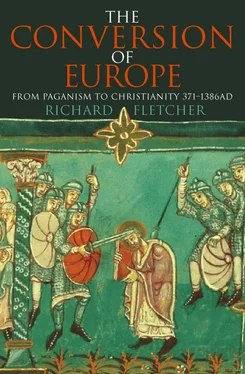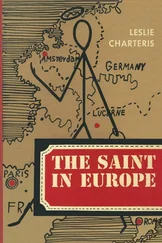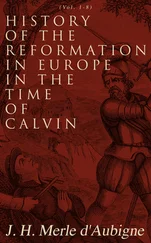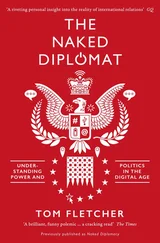The Goths matter to us because their crossing of the Danube frontier in 376 and subsequent settlement inside the empire symbolize the beginning of the process which since the time of Edward Gibbon we have known as the Decline and Fall of the Roman Empire. Who were these barbarians?
Those whom Roman writers of the third and fourth centuries referred to as Goths were a variety of peoples who spoke a Germanic language, Gothic. Known to the Romans in the first century A.D., they were then living in the basin of the lower Vistula in what is now Poland. They migrated thence in a south-easterly direction towards the Ukraine in the latter part of the second century. At the time of the raids on Asia Minor they were settled most thickly in the lower valleys of the Dnieper and the Dniester. Some among them were expanding to the south-west, into what is now northern Romania. This brought them into proximity with the only province of the Roman empire which lay to the north of the Danube, namely Dacia; an area bounded on the south by the Danube between the Iron Gates and its confluence with the river Olt, spreading northwards to take in the uplands of Transylvania embraced by the Carpathian mountains. During the troubled middle years of the third century the Goths pressed hard on the frontiers of Dacia and launched raids into Thrace and even Greece. It was to some degree in response to this pressure that the Emperor Aurelian withdrew Roman rule from Dacia in the early 270s. Thenceforward this sector of the empire’s frontier lay along the Danube. The Goths moved into the abandoned but by no means deserted province. Dacia had experienced a century and a half of Romanization. Substantial elements of the Romano-Dacian population remained, and archaeological evidence suggests that a modest urban life with a modest villa economy to supply its needs limped along into the Gothic period. It is possible, though unproven, that there were Christian communities among the population of Dacia in the third century. The most extraordinary witness to the tenacity of Roman civilization is the survival there of the Latin language, the ancestor of modern Romanian.
3. To illustrate the activities of Ulfila during the fourth century.
Much has been revealed about Gothic culture in this period by the archaeologists. To the evidence of the so-called Sîntana de Mureş/Černjachov culture, so named from sites respectively in Transylvania and the Ukraine, may be added a little information from Roman writers. What these combined sources have to tell us is as follows. The Goths were settled agriculturalists who practised both arable and pastoral farming. They lived in substantial villages but not in towns. Their houses were of wood, wattle-and-daub and thatch; sometimes they had stone footings or floors. Traceable artefacts are pottery, wheel-thrown, of good quality clay; iron tools and weapons; buckles and brooches of bronze or silver; and objects made of bone such as combs. These artefacts, commonplace enough in themselves, suggest a degree of specialization and division of labour. The Goths disposed of their dead by both cremation and inhumation, and the remains were frequently though not always accompanied by grave-goods. Variations in quantity and quality of personal possessions (in graves), and in the size of dwellings, suggest communities wherein were marked differences of wealth and status. A few hazardous inferences about the religious beliefs of the Goths may be essayed by the imprudent on the basis of the archaeological materials. The written sources tell us of sacrificial meat – if not among raiding parties in Asia Minor – and of wooden images or idols. We hear of a war god and of seasonal festivals. Gothic political organization is scarcely documented at all, and therefore fiercely controversial among scholars. However, it is likely that among the group of Goths settled to the west of the Dniester and termed by a Roman contemporary the Tervingi there existed in the fourth century a hereditary monarchy and a nobility of tribal chieftains. The Goths cannot be said to have had a written culture, though they did possess a runic alphabet. Runic inscriptions have been found on some grave-goods and, most famously and enigmatically, on a great gold torque, or neck ring, found in the treasure of Pietroasa in Romania, unearthed in 1837. Finally, we must observe that their interactions with the Roman world across the Danube were close and not always hostile. Goths left their native land to serve in the imperial armies, sometimes rising to high rank. Large amounts of Roman coin circulated in Gothia. Archaeologists have found remains of the tall, narrow Mediterranean pots called amphorae in Gothic contexts: they were used for the transport of wine or oil, commodities more likely to be trade goods than plunder.
In sum, the Goths were in no sense ‘primitive’ peoples. The Tervingi in Dacia (who are our main concern) were neighbours of the Romans, living in a Romanized province, with Roman provincials – whether native or captive – living under their rule. On the periphery of the Roman world, they experienced cultural interactions with their imposing neighbour. Like all the other Germanic barbarian peoples, the Goths in peacetime found much to admire, to envy and to imitate in Roman ways. When the pressure of Roman might bore down on them too heavily, they defended themselves by adopting those political and military usages which they had correctly identified as buttressing Roman imperial hegemony. It is a familiar pattern: peripheral outsiders tend to model themselves upon the hegemonic power on whose flanks they are situated. When the defences of the Roman empire gave way the Germanic barbarians entered upon an inheritance for which they had long been preparing themselves. They came not to wreck but to join. In this manner the decline and fall of the western empire was to be not destruction but dismemberment, a sharing out of working parts under new management.
Matters did not present themselves in such a rosy light to the provincials who lived to the south of the Danube in closest proximity to the Tervingi in the fourth century; nor to the imperial government whose job it was to protect them. Although there would seem to have been uneasy peace for a generation or so after the Gothic settlement in Dacia, pressure on the imperial borders started up again during the first quarter of the new century. The lower Danube frontier was impressively defended. There was a string of forts along the southern bank whose garrisons numbered at least 60,000 men. Detachments of the imperial fleet regularly patrolled the river. There were arms and clothing factories a little way behind the frontier to supply the troops. A spirit of invention and experiment is attested to by a curious anonymous work from this period and, quite possibly, this region which sought government sponsorship for, among other things, a paddledriven warship powered by oxen, a piece of mobile field-artillery, a portable bridge made of inflated skins and a new and improved version of the scythed chariot drawn by mail-clad horses. In the 320s Constantine built a colossal bridge over the Danube – it was 2,437 metres long – a little above its confluence with the Olt and used it to reoccupy Oltenia, the land in the angle between the two rivers. From this base a campaign was mounted against the Tervingi in 332. It was completely successful: the Tervingi were defeated and reduced to client status, their ruler’s son carried off to Constantinople as a hostage. This peace lasted for thirty-five years with only small-scale violations, notably in the late 340s. In the 360s it broke down, and the Emperor Valens fought a less decisive war in the years 367–9 which brought about a further pacification. There matters rested until the arrival on the scene shortly afterwards of a terrifying new enemy, the Huns.
Читать дальше












